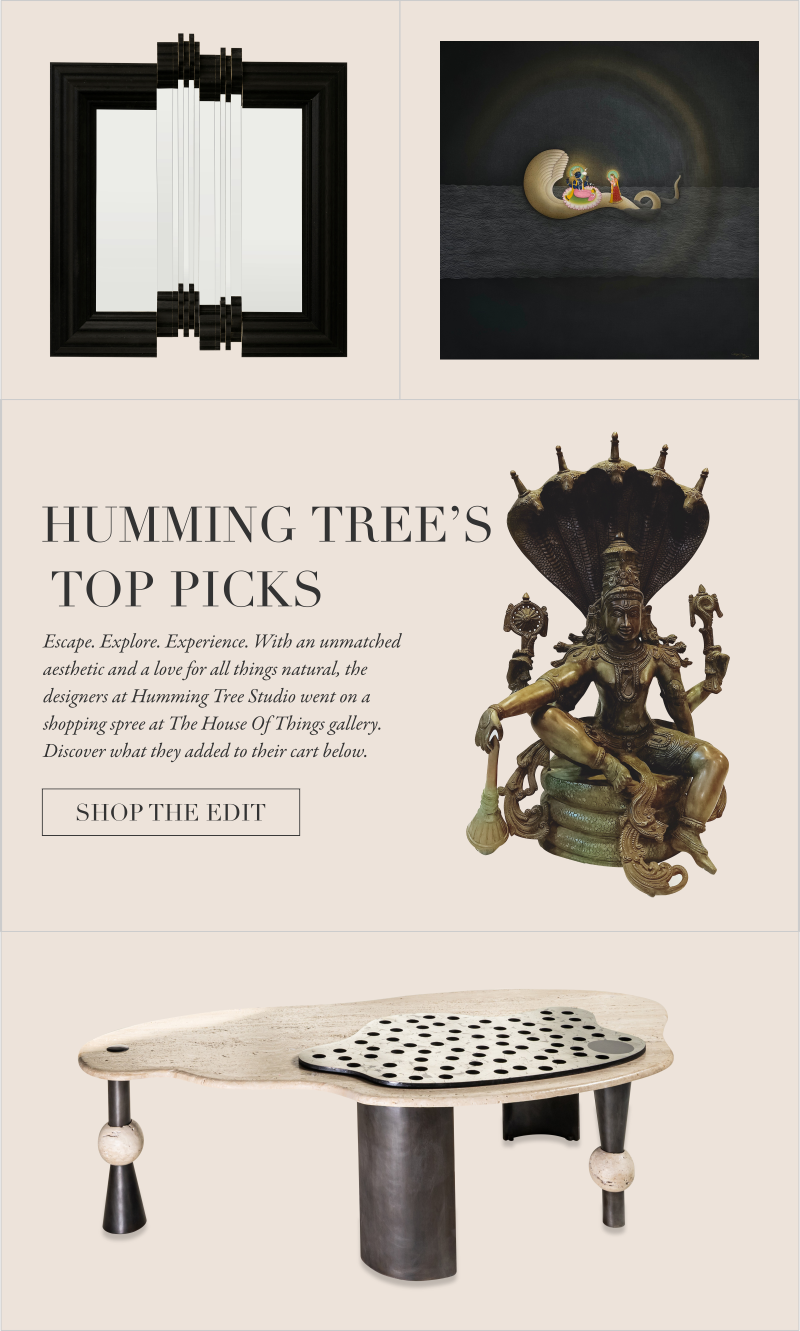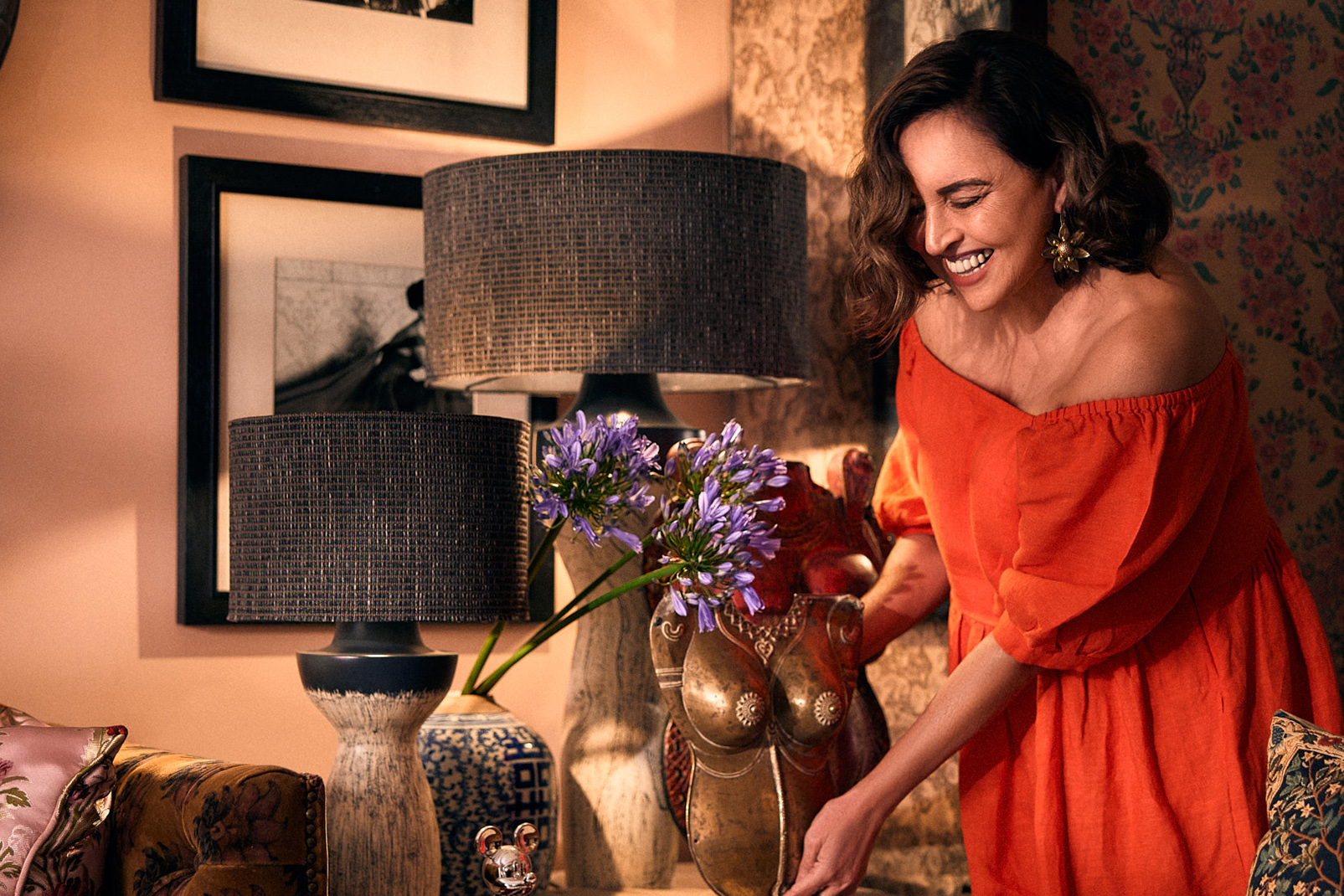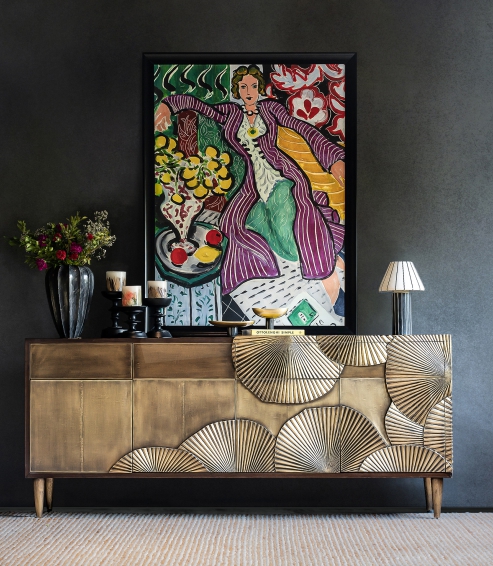We use cookies to make your experience better. To comply with the new e-Privacy directive, we need to ask for your consent to set the cookies. Learn more.
A BOUTIQUE STAY IN KERALA THAT PERFECTS THE ART OF BIOPHILIA
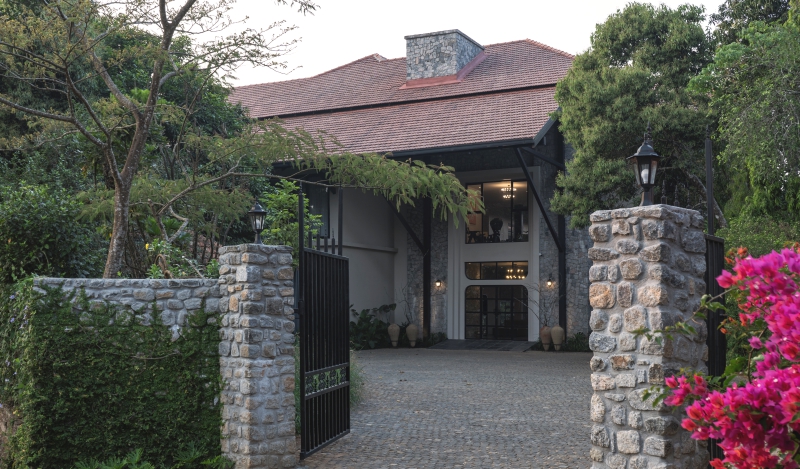
FLORA RESORTS, WAYANAD
All images courtesy Humming Tree Studio. Photographs courtesy Syam Sreesylam. Text excerpts Lavanya Chopra.
A winding driveway laden with Bougainvillaea trees on both sides lead to the stone-walled façade of Flora Resorts, a boutique stay ensconced in the lush plantation landscape of Vythiri, in Wayanad, Kerala. Sloping terracotta-hued roofs and rubble masonry give way to a softly curved entrance of the retreat, enveloped in lush Biophilic elements that make it one with nature. Tour the calming retreat in our latest story.
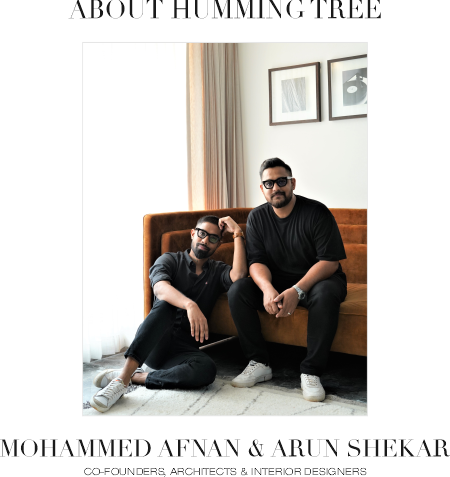

Under the creative direction of Architects and Interior Designers Mohammed Afnan and Arun Shekar, Humming Tree Studio is moved on the basis of incessantly exploring architectural quintessence by measuring projects on their impact as a rational and inclusive dialogue among context, geometry, and visual expression. Branded by versatility in solving intricate relationships between user needs, context, and materiality as a whole, the studio shows considerable sensitivity to time, in order to integrate the new with the existing, highlighting the detailed qualities of their projects and the environment.


“The client’s brief focused on creating a cohesive design grammar that surged through the property, creating a revived modern identity that could also be synonymous with the hospitality industry within Kerala. In addition, the climatic profile of Vythiri posed as a frontrunner in the design process, urging us in the direction of robust and locally available materials that weren’t precious and daunting with respect to upkeep”, says Arun Shekar.
Nestled amid the green-swathed plantations of Vythiri in the forested highlands of Wayanad, Kerala, Flora Resorts by Humming Tree is an ecological retreat melding the untamed lush landscape with the grounding ethos of the iconic Flora Group of Hotels. The only sound you pick is that of birdsongs, the fluttering of butterflies, and the twitter of animals.
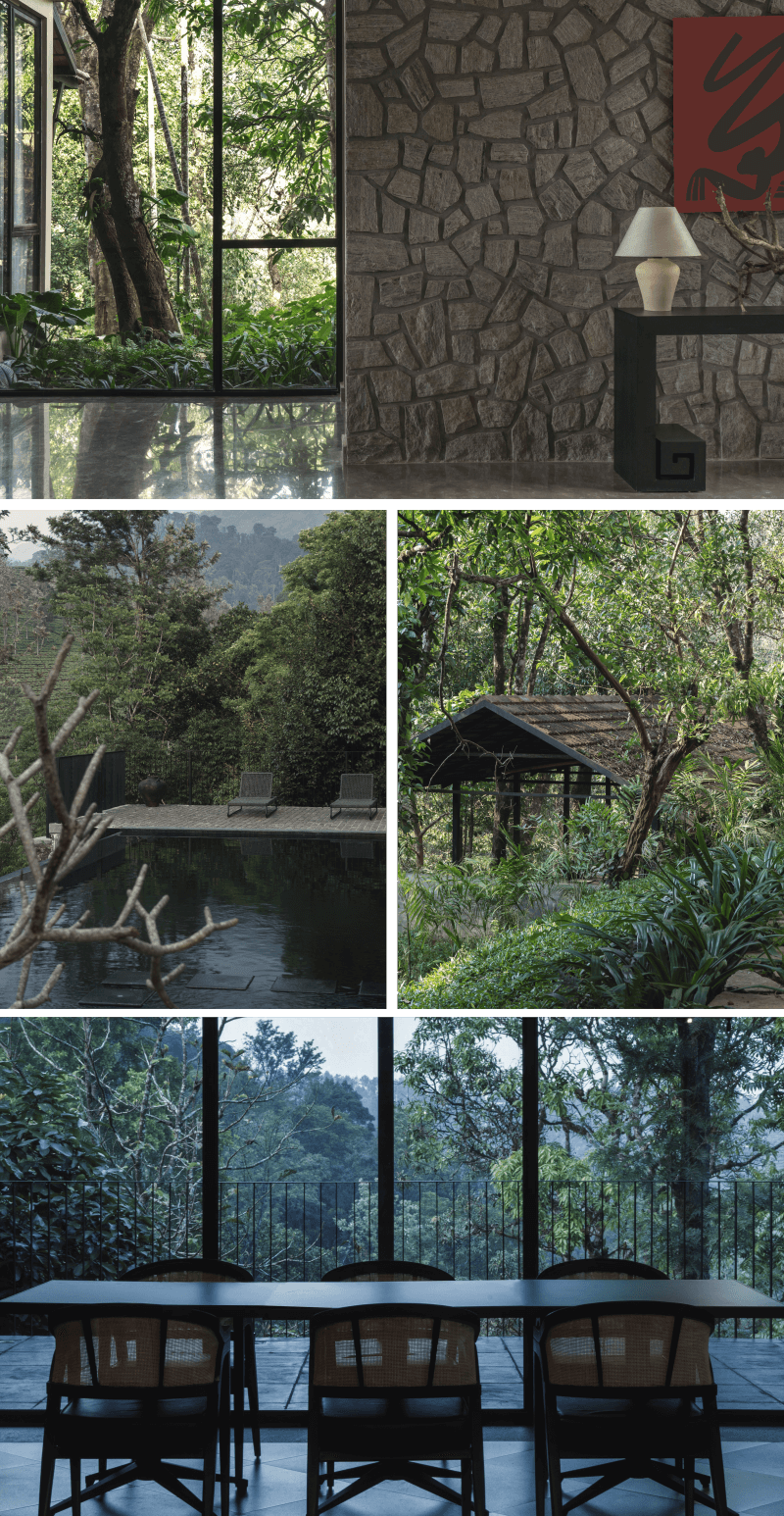

The area where it is situated has shared its layered history with many tribal communities in the past, honouring harmonious co-existence with design takeaways unabashedly apparent within the space.
Derived entirely from the landscape and its surroundings, the architecture and interiors of the space evoke calmness, upliftment, curiosity, and maximizes the overall still aesthetic of the space. Taking from the nature that surrounds it, the space is suffused with natural elements like ample light, natural wood surfaces, organic finishes, objects with a lived-in charm, and old sensibilities designed to persist.
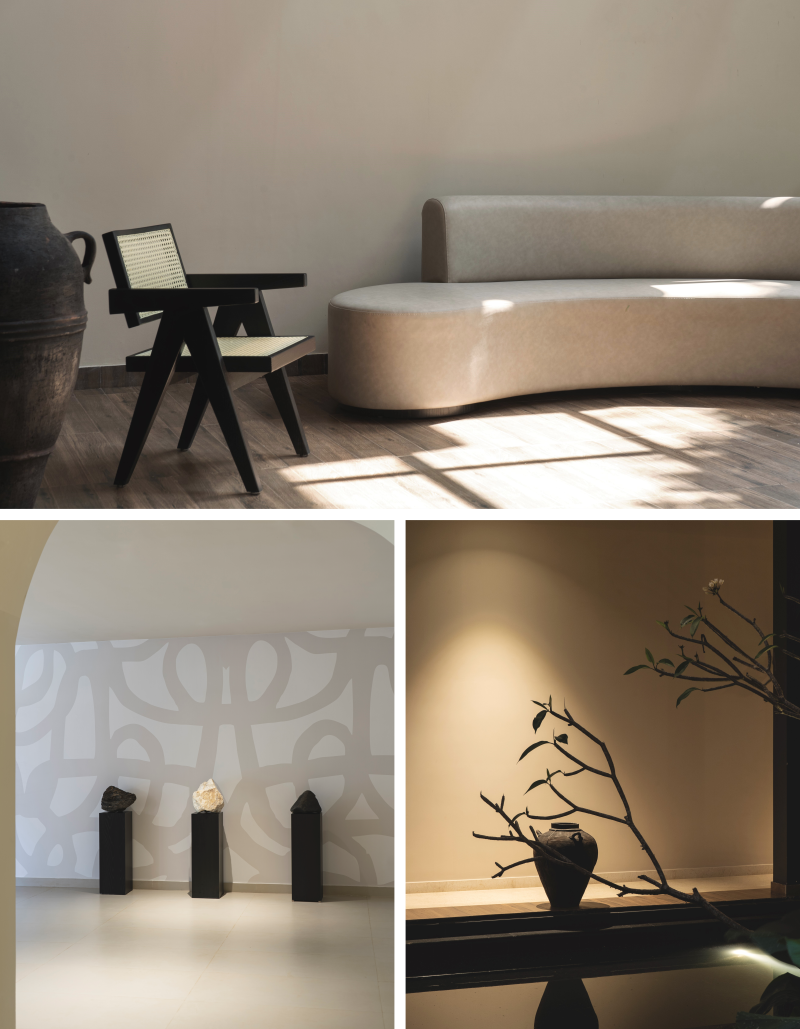

A quiet homage to the design sensibilities of Geoffrey Bawa, with a nod to the style of Tropical Modernism, the space is contrived of a minimalist approach where earthy and raw materiality is a key element.
“The master plan was birthed by building around the central core of the former venue that inhabited the land. A pre-existing dilapidated rectilinear block was restored and a duo of flanking blocks was created as a part of the reimagined blueprint. It has been a design exercise which tethered the past and present together with an empathetic understanding of the site and its history,” recollects Afnan.
The minimal gallery-like corridors are adorned with sinuous vaults and niches, displaying art inspired by the locale. Boulders that were previously collected are fashioned as sculptural additions, moss-sheathed branches pose as dramatic and breathing objects of art, earthenware urns and ‘chattis’ (traditional cookware of Kerala) have been used to create interesting vignettes. These terracotta clay potteries have generous, rounded bases and decorative backrests that can measure almost a meter in height. These feature sinuous, undulating shapes, as well as the faces of wabi-sabi textures, horns and geometric backrests.


“Terra Does the Talking” is a series of pottery the team explored in their project as installations to revive the clay pottery craft seen in Kerala.
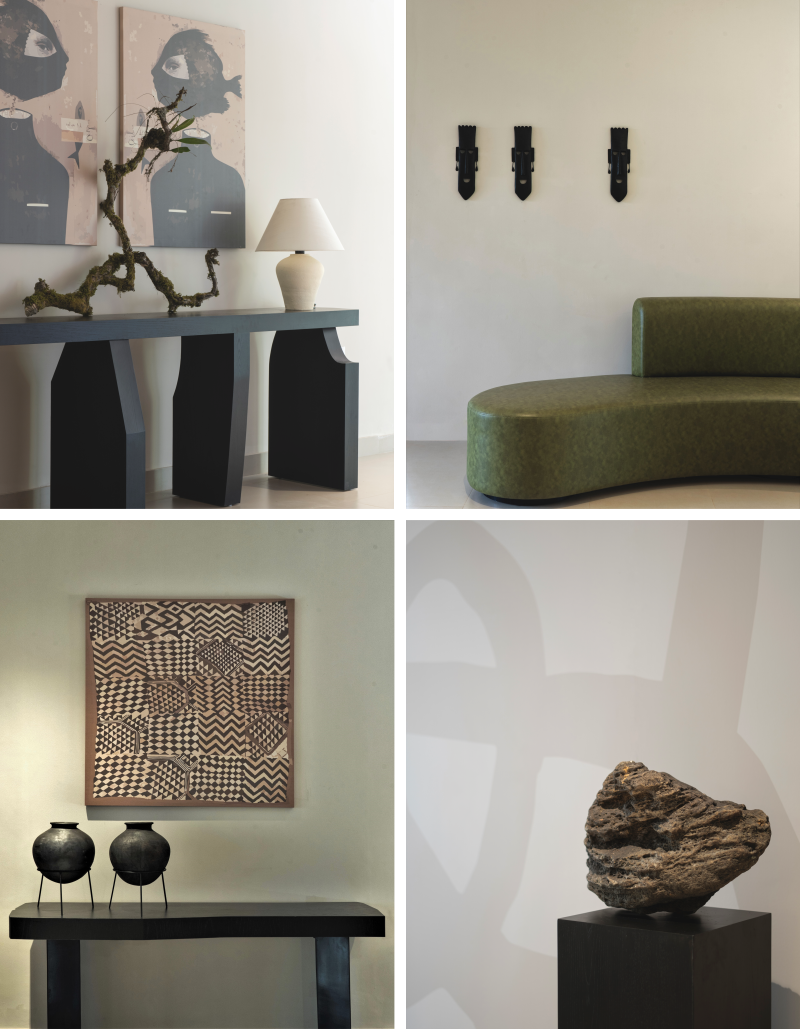

“Traditions continue to play a big role in our understanding of how to stay grounded and balanced”, says Arun.
Combining creative nous with considered landscaping, the studio achieved a look of an informal landscape dotted with native vegetation to resemble the adjoining forest. Every detail has been carefully considered such as the neutral colour scheme, a natural palette that flows through everything, from the outdoors to the interiors.
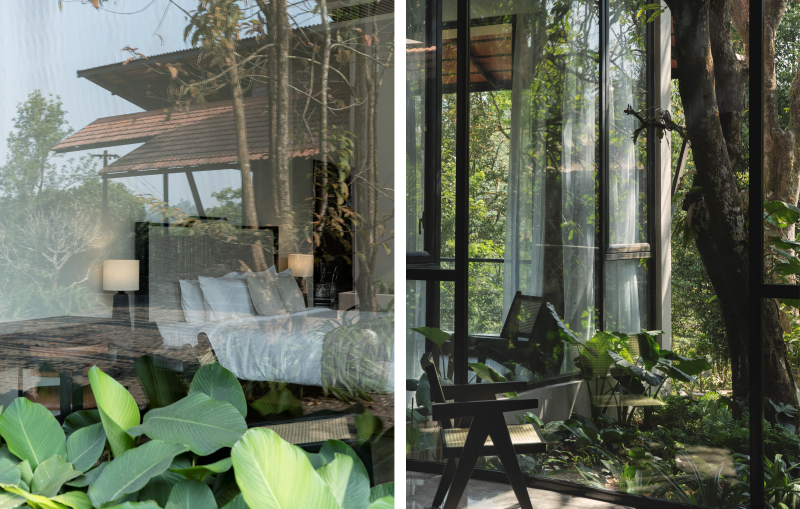

Collapsing the connection of the indoors and outdoors, the space exhibits a sense of Biophilia – to initiate a dialogue with the sweeping views, charming water bodies, and the volatile skies above.
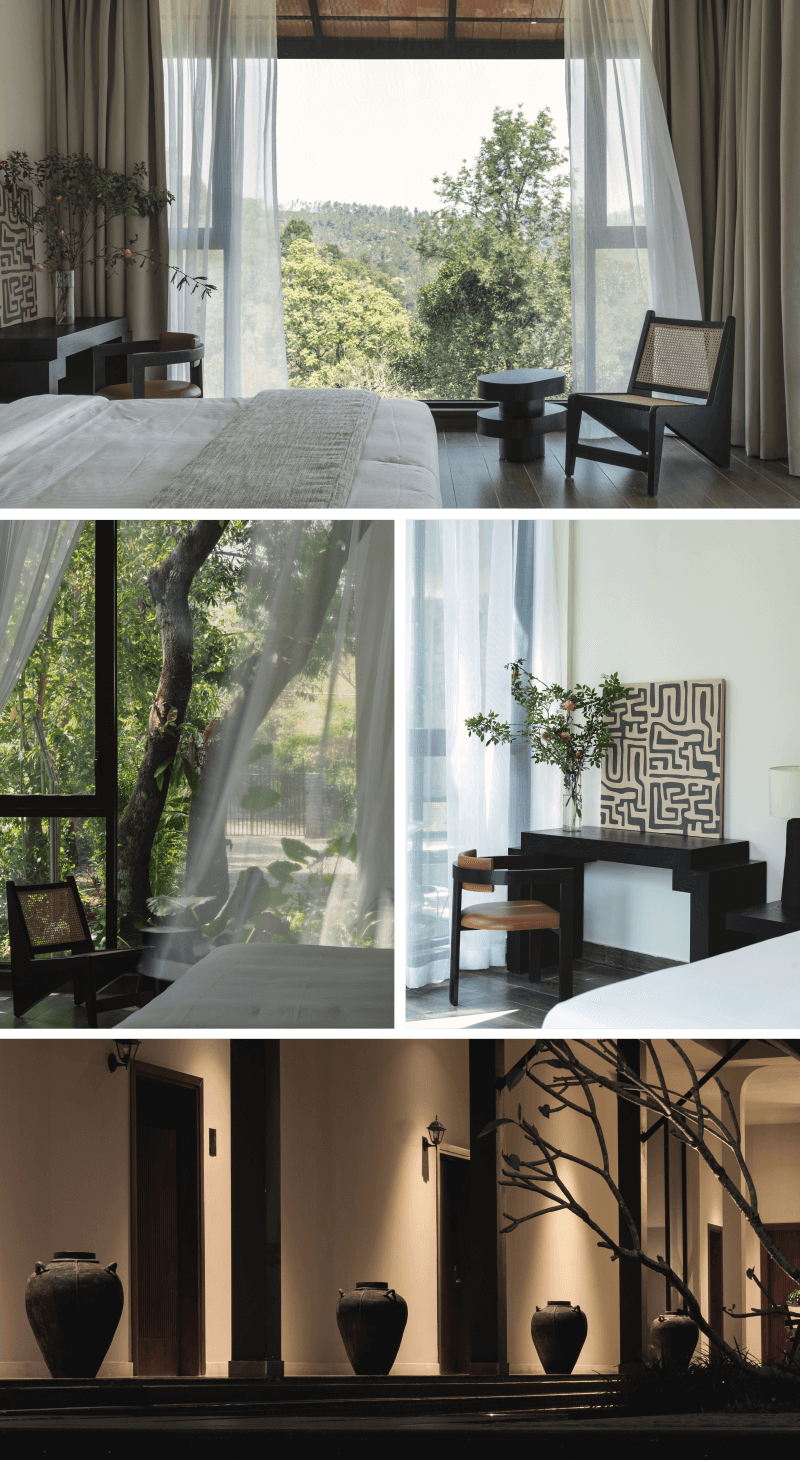

“The rooms at the venue are sanctuaries of comfort, creating immersive oases for its patrons. Scaling voluminous heights of over four metres, each room has been conferred with floor-to-ceiling fenestrations that are picture windows to the panoramic views of nature,” state Afnan and Arun.
MEET THE TASTEMAKERS - ARUN & AFNAN
Discover the creative geniuses of Humming Tree Studio and what goes behind their design process, in conversation with The House Of Things.
THOT: How do you approach your design projects? Talk us through the process…
ARUN & AFNAN: We look around and regard our practice as a context—what it is and what it can be—ahead of the firmly functional concerns. We think about its civic nature and how that can be enhanced, how the spaces we create can enliven the acquaintance of being there. At Humming Tree, we always see and work towards the impact created towards nature, the environment we live within & strive to abide by this and work towards creating a better built envelope in micro or macro level.
Practice is becoming each day a more complex process while it seeks to embrace the various aspects of design. We look at the design process to be dynamic and holistically which includes building technologies and systems, syncing in with the more human dimensions.
THOT: What prompted you to take this project during Covid?
ARUN & AFNAN: It was great working on this project during that time , when we got the brief , which was unrepentantly on Geoffrey Bawa’s lines and thought process. ‘Craft will become fundamental in design.’ is something HT imbibed & got exposed to an architectural language to a greater extent. ‘‘A schooling in Architecture gives you the autonomy to use the right side of your brain, the creative part.’’
THOT: How did you incorporate the culture and crafts of the surrounding ecosystem into the design?
ARUN & AFNAN:Our journey into the world of the rural artisan communities in the nearby town and villages in Calicut was not with the intention of 'developing' them or educating them. We went to them to regain that which we had lost in the process of getting educated. To learn from them. Having escaped 'education' and 'development' they were still original and authentic and were holding on to the culture and world-view, which sustained them for centuries. We perceived the rural / tribal communities as being wise and evolved. And recognized that only by learning from them could we lead sustainable lives.
The pots, art works, tiles are all sourced and worked on with local artisans.
THOT: Do you consider aestheticism or functionality to be more important?
ARUN & AFNAN: Functionality is an essential factor, but its aesthetics cannot be ignored either. We always play in the context and decide the driving force… but both are equally important.
It’s like choosing between apples and oranges.
THOT: What formed the nucleus of the design?
ARUN & AFNAN:Kerala’s local art and craft. It's the crafts in Kerala that need attention and can be brought to notice, and we as designers are looking forward to revive, study and understand the approach to use and set up a stage for these forms of craft via our projects.
THOT: Where did you source the furniture and accessories from?
ARUN & AFNAN: Custom made from local vendors, stones and twigs sourced from site, art and crafts & decor from local artists.
THOT: Which is your favourite corner at Flora Vythiri Resort, and why?
ARUN & AFNAN: I mean - reflections & proportions who ?
